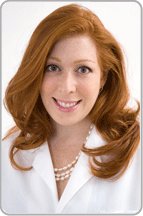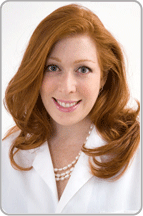
Dr. Suzanne Friedler
Now we actually have ways to treat acne, which can be especially vexing for adults. And as our understanding of this common skin condition increases, so do effective therapies that do not involve antibiotics.
NEW YORK (PRWEB)
January 20, 2021
In ancient Rome, the physician Theodosius advised those suffering from acne to view a falling star: Pimples, he said, would fall away, too. “Like us, the ancients contended with problem skin,” notes Dr. Suzanne Friedler, a dermatologist with Advanced Dermatology PC. “Now we actually have ways to treat acne, which can be especially vexing for adults. And as our understanding of this common skin condition increases, so do effective therapies that do not involve antibiotics.”
Acne is the number one skin problem in the United States, affecting as many as 50 million people, according to the American Academy of Dermatology.
“It’s not simply a problem of adolescence,” explains Dr. Friedler. “Increasingly, we’re seeing adults battling acne, in particular women, fifteen percent of whom are trying to resolve breakout-prone skin.”
The pimples that often pop up on teenagers’ faces – as many as eighty-five percent experience acne – can persist into adulthood. And, in some cases, individuals who were spared problem skin during adolescence may experience first-time breakouts as adults.
“Untreated, acne can leave scars, both visible and psychological,” emphasizes Dr. Friedler. ”It is implicated in social anxiety and depression, causing major repercussions in patients’ lives. Research shows that, unaddressed, this toll is even greater for adults.”
A pimple is the result of converging factors. Genetics can play a role in triggering inflammation and overproduction of the skin oil sebum, which leads to plugged hair follicles: skin pores clogged with dead skin cells and the namesake skin bacteria p. acnes.
“Research,” observes Dr. Friedler, “has given us a more nuanced understanding of the complex interactions that are at play, with the body’s immune and endocrine systems governing inflammatory processes and the sebaceous glands that produce sebum.”
Traditionally, the arsenal of acne treatments has included antibiotics, both in topical and oral form. “Antibiotics,” explains Dr. Friedler, “can tackle the p. acnes bacteria. But they also can lead to bacterial resistance and create problems with maintaining our body’s good bacteria.”
With that in mind, Dr. Friedler has the following tips for treating adult acne without relying on antibiotics.
5 Tips for Treating Adult Acne Without Antibiotics:
1. Break the breakout cycle with hormonal treatment: “Androgens,” says Dr. Friedler, “are hormones that can trigger excess sebum. For women, excess androgens can be regulated with combination oral contraceptives and androgen blockers like Spironolactone. This treatment can break the breakout cycle.”
2. Consider a non-antibiotic Rx: “Your dermatologist’s medicine cabinet,” advises Dr. Friedler, “holds effective treatments that avoid antibiotics. These include prescription topical creams and washes, as well as both topical and oral retinoids. The oral retinoid Isotretinoin has unmatched success against severe, stubborn acne. Make sure that you discuss any potential side effects. Isotretinoin, for example, requires careful monitoring.”
3. Out-patient procedures can help too: “Lasers, chemical peels and comedone extraction can help speed resolution of the acne. While lasers, peels, subscision and micro needling can help with discoloration and acne scarring,” Dr. Friedler lists. “Your skin care specialist can use a number of techniques to address both acne lesions and the scarring and discoloration acne can leave behind.”
4. Maintenance matters: “Treating acne is the first step,” states Dr. Friedler. “Next, patients want to work with their skin-care specialist to keep their skin clear. This means sticking with effective preventative medication. For less severe acne products like benzoyl peroxide, sodium sulfacetamide and salicylic acid can play a role. Developing an everyday skincare routine is also essential: gentle, non-soap cleansing – no scrubbing; regular moisturizing to prevent overproduction of sebum; and careful choice of products – labels with ‘non-comedogenic’ signal that the product won’t clog pores.”
5. Stay tuned for new treatments: “There are trials underway for new ways to disrupt the system misfires that trigger acne,” notes Dr. Friedler. “Work with a dermatologist who stays aware of breakthroughs in the field to make the most of new options.”
“Adult acne is a serious condition,” concludes Dr. Friedler. “Fortunately, we have increasing on-the-ground treatments that do not always include antibiotics.”
Suzanne J. Friedler, M.D. F.A.A.D., is a board-certified fellow of the American Academy of Dermatology, with expertise in many areas of medical and cosmetic dermatology. She has been with Advanced Dermatology PC since 2002.
Advanced Dermatology P.C. and the Center for Laser and Cosmetic Surgery (New York & New Jersey) is one of the leading dermatology centers in the nation, offering highly experienced physicians in the fields of cosmetic and laser dermatology as well as plastic surgery and state-of-the-art medical technologies. http://www.advanceddermatologypc.com.
Share article on social media or email:

